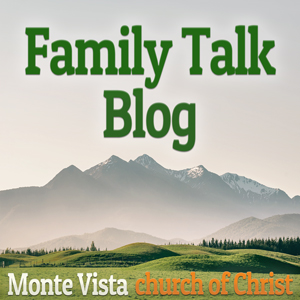When all the walls, furniture, and utensils of the Tabernacle were completed, “Moses examined all the work and behold, they had done it; just as the LORD had commanded, this they had done. So Moses blessed them” (Exodus 39:43). However, the items could not be used until they had been sanctified, dedicated to the purpose God had intended. And before people could worship and make offerings in the Tabernacle, the Levitical Priesthood had to be appointed and sanctified to the service God set for them.
The noun “sanctification” means declaring something “Holy to God.” The process is different in the Old Testament from the process in the New Testament. The blood of bulls and goats was used for the Tabernacle and Levitical Priesthood, but Jesus gave His blood to sanctify those following and obeying Him by believing the Gospel in the New Testament. In both testaments, the process of sanctification takes deliberate action. The articles and utensils of the Tabernacle were made following God’s plans and direction. The Priests were drafted according to God’s instructions and directions. Both artifacts and people were sanctified by participation in a ceremony where the blood of a sacrifice was shared among those being sanctified. Some people, like the High Priest, were also anointed, showing that God had chosen them for a specific office with dedicated duties and responsibilities.
Exodus 28 describes the Priests’ Garments, and Exodus 29 describes “What you shall do to them to consecrate them to minister as priests to Me” (Exodus 29:1). The first seven chapters of Leviticus detail the sacrifices the Levitical Priesthood was responsible for supervising and performing. Leviticus chapters 8 and 9 record the actual sanctification, setting apart, of Aaron and his sons to serve in the priest’s office in the Tabernacle.
As the mediator of the covenant between Israel and God, Moses acted as the mediator between God and the men He chose to be priests. Moses dressed Aaron in the High Priest’s garments “just as the Lord had said” (Leviticus 8:9). The first portion of the sanctification was the anointing. “Moses then took the anointing oil and anointed the tabernacle and all that was in it, and consecrated them. He sprinkled some of it on the altar seven times and anointed the altar and all its utensils, and the basin and its stand, to consecrate them. Then he poured some of the anointing oil on Aaron’s head and anointed him, to consecrate him” (Leviticus 8:10-12). Next, Aaron’s sons were dressed in priestly garments (Leviticus 8:13).
Because Aaron and his sons were sinful men, a sin offering for them was necessary. “Moses brought the bull of the sin offering, and Aaron and his sons laid their hands on the head of the bull of the sin offering” (Leviticus 8:14). “Next Moses slaughtered it and took the blood and with his finger put some of it around on the horns of the altar, and purified the altar. Then he poured out the rest of the blood at the base of the altar and consecrated it, to make atonement for it” (Leviticus 8:15). “Then he presented the ram of the burnt offering, and Aaron and his sons laid their hands on the head of the ram. Moses slaughtered it and sprinkled the blood around on the altar” (Leviticus 8:18-19).
Moses “presented the second ram, the ram of ordination, and Aaron and his sons laid their hands on the head of the ram. Moses slaughtered it and took some of its blood and put it on the lobe of Aaron’s right ear, and on the thumb of his right hand and on the big toe of his right foot. He also had Aaron’s sons come near; and Moses put some of the blood on the lobe of their right ear, and on the thumb of their right hand, and on the big toe of their right foot. Moses then sprinkled the rest of the blood around on the altar” (Leviticus 8:22-24). He was consecrating their ears to hear God’s word, their hands to do God’s will, and their feet to go where God sends.
Since Christ provided His blood as the sacrifice for our sins, we must have His blood applied to our bodies. That can only occur as we submit to dying with Him in baptism. “Our old self was crucified with Him, in order that our body of sin might be done away with, so that we would no longer be slaves to sin; for he who has died is freed from sin. … So, consider yourselves to be dead to sin, but alive to God in Christ Jesus” (Romans 6:1-11). Paul said, “but you were washed, but you were sanctified, but you were justified in the name of the Lord Jesus Christ and in the Spirit of our God” (1 Corinthians 6:11).
Peter reminds us that we, unlike Aaron and his sons, are a Royal Priesthood serving under the King of Kings and Lord of Lords. “You are a chosen race, A royal priesthood, a holy nation, a people for God’s own possession, so that you may proclaim the excellencies of Him who has called you out of darkness into His marvelous light” (1 Peter 2:9).
Are you a royal priest serving in the church that Jesus built?
